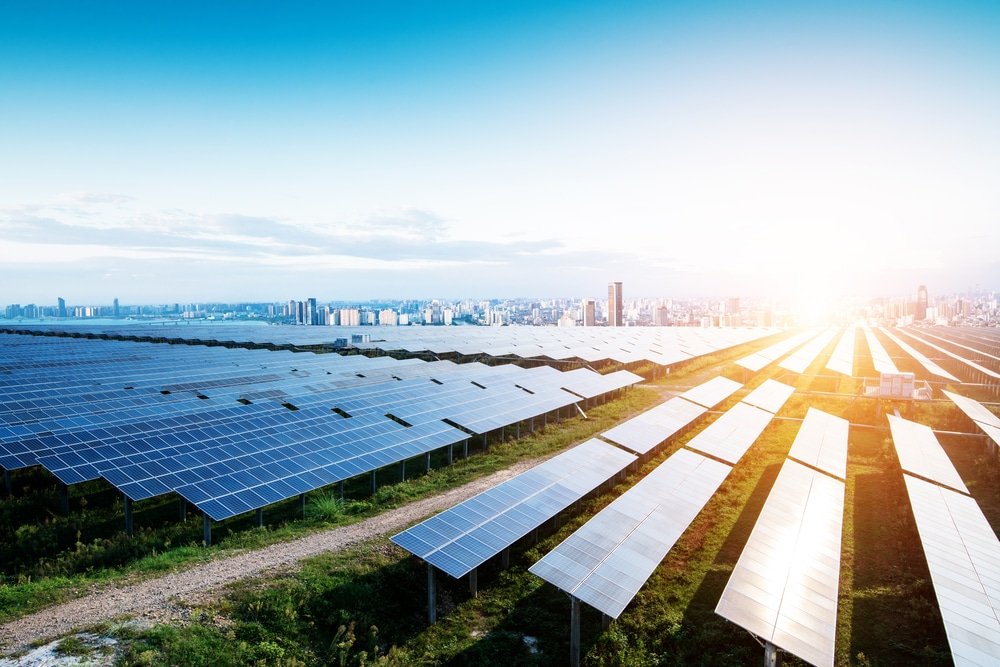Amazon received the green light from Indian authorities to start trading renewable energy sources in the country.
After securing a category-III energy trading license, the e-commerce giant is building up a series of wind and solar energy projects in India. A category III license allows the company to trade electricity of up to 4,000 million units annually.
Amazon has signed a total of 720 MW worth of energy purchasing agreements in India. It has also signed agreements with partners such as Vibrant Energy, ReNew Power Global, Amp Energy India and Brookfield Renewable. Amazon will handle all its energy trading through its new subsidiary, AEI New Energy Trading Pvt. Ltd.
In September last year, ReNew Power signed a deal with Amazon to supply 210 MW of solar power. The 210 MW solar farm will be located in the northern state of Rajasthan. By operational capacity, ReNew Energy is one of India’s largest renewable energy companies.
- The solar farm is one of Amazon’s three solar renewable energy projects in India. The second one is a 100 MW project in partnership with Amp Energy. The third project is a 110 MW project with Brookfield Renewable.
These three solar farms can produce a total of 1,076,000 megawatt hours (MWh) of clean energy annually. This would be enough to cover the electricity consumption for around 360,000 medium homes in Delhi.
Additionally, at the end of last year Amazon announced two more utility-scale renewable energy projects. Partnering with Vibrant Energy, Amazon will develop two hybrid solar-wind projects in Karnataka and Madhya Pradesh.
These projects have a total capacity of 300 MW. The company now has a total of five utility-scale renewable energy projects in progress in India.
India’s Net Zero Goals
In recent years, India has set ambitious net zero goals and ramped up efforts to decarbonize different sectors. In November 2022, India submitted its Long-Term Low Emission Development Strategy to the United Nations Framework Convention on Climate Change (UNFCCC) at COP27.
India has committed to reaching net zero carbon emissions by 2070 and increase its renewable energy capacity to 500 MW by 2030. In addition to developing renewable energy projects
Amazon’s Renewable Projects Across Asia
As the largest corporate purchaser of renewable energy in the world, Amazon has a strong commitment towards decarbonizing the planet. Besides India, Amazon has also invested in green and renewable energy projects in Indonesia, Japan, Singapore and Australia.
In the Asia-Pacific region, the company has over 50 renewable energy projects in the works. Amazon’s portfolio of renewable energy projects across Asia have a total capacity of 1.6 GW.
In 2021, Amazon launched its first renewable energy project in Singapore. It is a 62 MW solar plant that would have the potential to generate 80,000 megawatt hours (MWh) of clean energy annually. This would be enough to cover the electricity consumption of over 10,000 homes in Singapore.
Last year, Amazon also announced its first renewable energy projects in China. They are a wind and solar farm that have a total energy capacity of 200 MW, and can generate 496,000 MWh annually. This would cover the energy needs of over 250,000 homes in China.
Amazon’s Decarbonization Strategies
Beyond developing renewable energy projects, Amazon Web Services (AWS) has also invested in massive climate-based data collection efforts around the world. AWS set up the Amazon Sustainability Data Initiative (ASDI), providing greater access to large climate-based datasets to help researchers and scientists.
The company also partnered with Verra to introduce a new carbon credit label called ABAQUS. The new label aims improves on additionality and durability considerations of long-term decarbonizing initiatives.
- Verra is a non-profit company that has been a leader in creating and upholding environmental standards, especially with regards to carbon emissions.
This is in the midst of reports that Amazon’s carbon footprint grew in 2021, with a 40% increase since 2019. In 2021, the retailer had emitted a total of 71 million metric tons of carbon emissions.
In 2019, the company founded The Climate Pledge, to lay out its net zero commitments. The goal is to reach net zero by 2040, 10 years ahead of the 2050 goal set by the Paris Agreement.
The pledge, signed by over 300 businesses, covers three key aspects of decarbonizing:
- Eliminating carbon using decarbonizing projects (e.g. renewable energy)
- Carbon emissions reporting, with better regularity and accuracy (e.g. via initiatives like ASDI)
- Using credible carbon offsets (e.g. ABAQUS)

